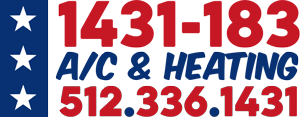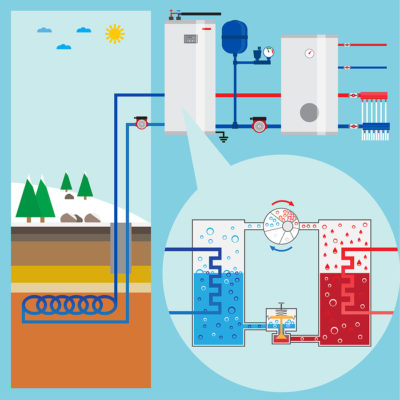Heat pumps have become increasingly popular in recent years. Since they transfer heat into and out of homes, they are energy efficient. Most heat pumps, in fact, consume less energy than both gas and electric furnaces.
Whether your home currently has a heat pump, or if you’re thinking about investing in one, here’s some information that will help you familiarize yourself with its cycles. There are different types of heat pumps, and they are available in different capacities. Nonetheless, nearly all heat pumps have three primary cycles.
Heating
The heating cycle, of course, is designed to warm your home. When you set the thermostat to heat, your heat pump will enter this cycle.
Your heat pump will not generate heat like a regular furnace. Instead, it will absorb heat energy from outside and move it to the indoor air. This is true even when the air outside is cold.
Cooling
In addition to a heating cycle, heat pumps have a cooling cycle. You can toggle between the heating and cooling cycle on the thermostat.
When your heat pump is in the cooling cycle, the refrigerant will travel from the indoor evaporator coil to the outdoor condenser coil. This is the same way that traditional AC systems work. Traditional AC systems and heat pumps both create cooler indoor spaces by moving refrigerant from the indoor evaporator coil to the outdoor condenser coil.
Defrost
The third heat pump cycle is defrost. The defrost cycle lives up to its name by defrosting your heat pump. More specifically, it will remove frost from the outdoor condenser coil.
When using your heat pump to warm your home, frost may accumulate on the outdoor condenser coil. The outdoor condenser coil will be exposed to cold outdoor air. If it’s below freezing outside, frost may accumulate on it. Fortunately, heat pumps are designed with a special defrost cycle to prevent the accumulation of frost.
The defrost cycle is similar to the cooling cycle. It will send hot refrigerant from the indoor evaporator coil to the outdoor condenser coil. The main difference is that the condenser coil’s fan will remain off while in the defrost cycle. Without the fan running, heat will remain trapped at the outdoor condenser coil, thereby melting any frost and ice.
If you are experiencing a problem with your air conditioning or heating call us at 512-336-1431 to schedule an appointment. We’ll be glad to come out and take a look at the issue.
1431-183 A/C & Heating proudly serves Round Rock, Georgetown, Cedar Park, Pflugerville, Leander, Liberty Hill, and North Austin.

